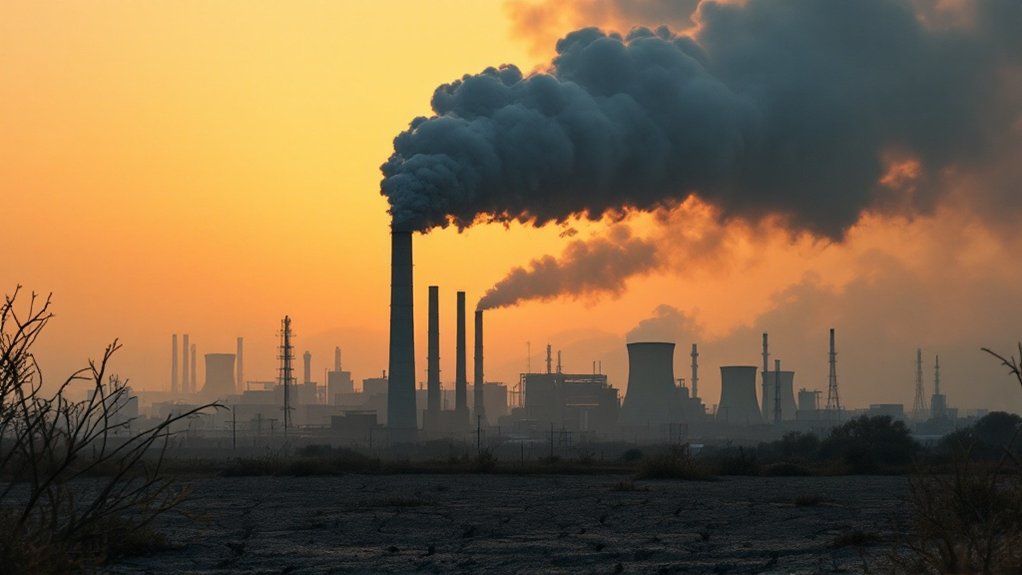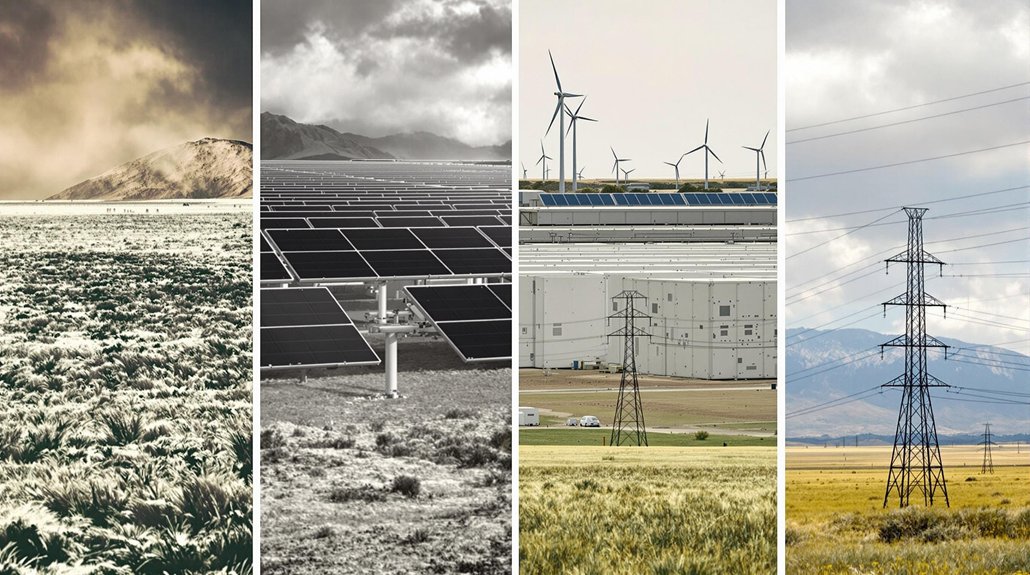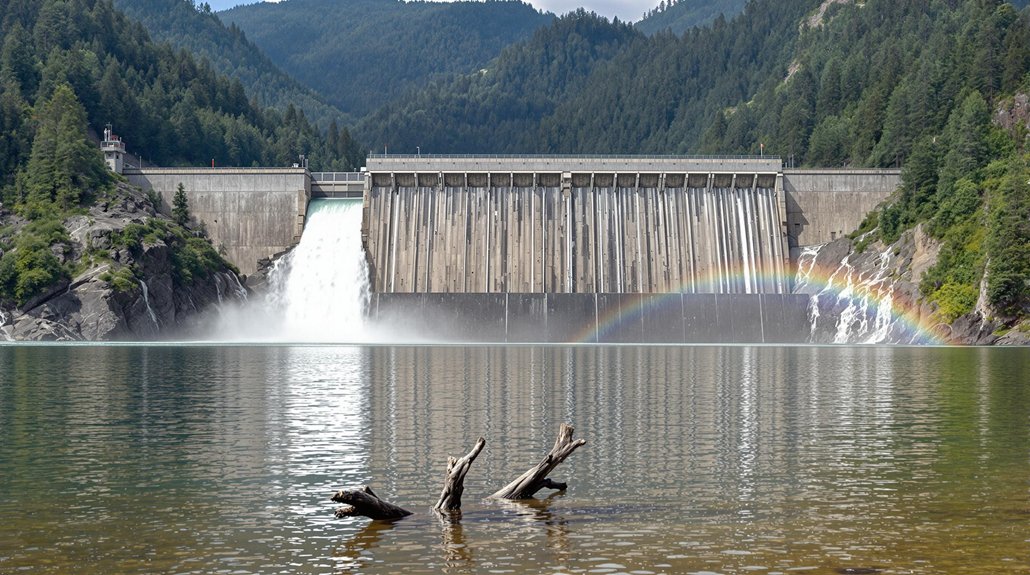The main culprit behind climate change? Humans. Our fossil fuel addiction pumps massive amounts of greenhouse gases into the atmosphere, while deforestation and cement production pile on more CO2. Natural factors like solar variations and volcanoes play a role, but they're tiny compared to our impact. The proof is in the numbers: CO2 levels are at their highest in 3 million years. And those feedback loops we've triggered? They're making everything worse.

While scientists have long understood the basic mechanisms of climate change, the evidence now points overwhelmingly to human activities as the primary driver. The main culprit? Greenhouse gas emissions. When we burn fossil fuels, chop down forests, or produce cement, we pump massive amounts of CO2 into the atmosphere.
Throw in methane from agriculture and landfills, nitrous oxide from fertilizers, and those nasty fluorinated gases from refrigerants – it's like we're wrapping Earth in an increasingly thick blanket.
Every greenhouse gas we release – from farming, trash, or cooling systems – adds another layer to Earth's stifling blanket.
The numbers are staggering. CO2 levels have hit 419 parts per million – the highest in 3 million years. Let that sink in. Methane? Up 164% since 1750. And we've cranked up the greenhouse effect by a whopping 43% since 1990. Mother Nature must be shaking her head in disbelief.
Sure, natural factors play a role. Earth's orbit wobbles, the sun's output varies, and volcanoes occasionally throw tantrums. But here's the kicker – these natural forces alone can't explain the rapid warming we're seeing. It's like blaming your weight gain on genetics while ignoring those midnight pizza deliveries. The cement industry alone contributes to this warming by releasing 900 kg of CO2 for every 1000 kg of cement produced.
What's worse, the climate system is full of amplifying feedbacks. As ice melts, Earth reflects less sunlight. As oceans warm, they belch out stored CO2. Permafrost thaws and releases methane. The burning of fossil fuels has led to ocean acidification, threatening marine ecosystems worldwide. It's a vicious cycle, and we've kicked it into high gear.
Scientists call it "radiative forcing" – the push that greenhouse gases give to global temperatures. Since 1750, human activities have cranked up this forcing by 3.0 watts per square meter. CO2 is the biggest bully, responsible for two-thirds of that increase.
Even the cooling effect of aerosols can't offset this warming momentum. The verdict is clear. Natural climate variability is like a gentle wave on the beach. Human-induced climate change? It's a tsunami.
The warming rate we're experiencing far exceeds anything seen in the past 2,000 years. That's not coincidence – it's causation.
Frequently Asked Questions
How Long Will It Take for Earth to Recover From Climate Change?
Earth's recovery from climate change isn't a quick fix.
Natural processes take their sweet time – we're talking thousands of years, not decades. Oceans need centuries to stabilize, ice sheets require millennia to rebuild, and CO2 levels won't drop overnight.
Even if humans stopped all emissions today, it'd take 20,000 to 50,000 years for Earth to fully bounce back.
Yeah, that long.
What Role Do Volcanic Eruptions Play in Global Temperature Changes?
Volcanic eruptions are climate's double agents. Their sulfate aerosols cause short-term cooling by reflecting sunlight back to space – like nature's sunscreen. Major eruptions can cool Earth by up to 0.5°C for a few years.
But volcanoes also emit CO2, contributing to long-term warming. Still, their greenhouse gas output is tiny – just 1% of human emissions.
Modern eruptions? More cooling than warming.
Can Individual Actions Make a Meaningful Difference in Fighting Climate Change?
Individual actions do matter, but they're just part of the puzzle.
While personal choices like going car-free or eating plant-based can reduce carbon footprints, the real impact comes from collective behavior.
Here's the kicker: just 100 companies produce 70% of global emissions.
So yeah, skip the straw – but real change needs both individual actions and major systemic reforms.
Every bit helps, but policy changes pack the biggest punch.
How Does Climate Change Affect Migration Patterns of Wildlife?
Climate change is messing with wildlife big time.
Birds are migrating weeks earlier than usual, while Arctic species are stuck waiting for winter to actually show up.
Marine life? They're redrawing their travel maps as oceans warm.
Some animals are climbing higher up mountains – about 36 feet per decade.
Adding insult to injury, many creatures find their traditional pit stops disappearing along migration routes.
Which Countries Are Most Responsible for Historical Greenhouse Gas Emissions?
The United States stands as the biggest historical polluter, responsible for a whopping 25% of all CO2 emissions since 1751.
China follows at 13%, though most of their emissions are recent – they're basically the new kid on the carbon block.
Russia, Germany, and the UK round out the top five, accounting for 7%, 5.7%, and 4.6% respectively.
The industrial revolution kicked this whole mess off – thanks, Britain.








